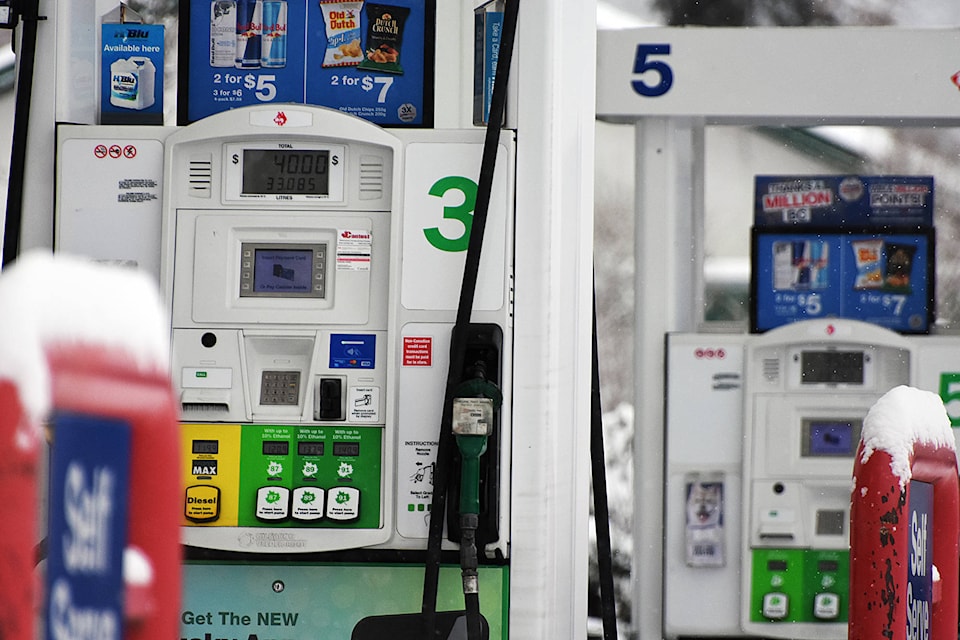Canada’s price picture softened to two per cent last month following a sharp drop in gasoline prices compared to a year ago.
The annual inflation number for June hit the Bank of Canada’s ideal target as it came down from 2.4 per cent in May, Statistics Canada said Wednesday in a new report. It marked the first move lower after four straight months of a rise in the year-over-year change.
The two per cent reading — right at the mid-point of the Bank of Canada’s range of one to three per cent — doesn’t put immediate pressure on governor Stephen Poloz to adjust his key interest rate.
Leaving out gas prices, Statistics Canada said last month’s annual inflation number was 2.6 per cent.
The 9.2 per cent, year-over-year drop in pump prices was partly due to rising inventory levels in the United States and Alberta’s elimination of its carbon pricing measures at the end of May, Statistics Canada said.
Energy prices fell in every province, with Alberta easily seeing the largest decrease compared with a year earlier. Nationally, the cost of energy dropped 4.1 per cent.
In addition to weaker gas prices, consumers also paid less last month for internet services, digital equipment and traveller accommodation.
Prices showed strength in other areas — led by a 17.3 per cent increase in the cost of fresh vegetables. The report said fresh vegetables saw their biggest price acceleration since January 2016, an increase likely caused in part by poor weather in farming regions.
Consumers also shelled out more in June for auto insurance, mortgage borrowing costs, vehicle purchases and rent.
“As has been so often the case in recent times, gasoline was the swing factor,” BMO chief economist Doug Porter wrote in a research note to clients.
“Notably, inflation can’t really be described as ‘tame’ when one drives away from the gas station.”
ALSO READ: Gasoline companies to speak at public inquiry into B.C. pump prices
The average of Canada’s three gauges for core inflation, which are considered better measures of underlying price pressures by omitting volatile items like gasoline, decelerated slightly to 2.03 per cent, down from a revised 2.1 per cent the previous month.
Josh Nye, senior economist for RBC Economics Research, said the country’s overall inflation conditions are a key reason why the Bank of Canada is unlikely to be in a rush to follow the U.S. Federal Reserve in lowering interest rates.
In the coming weeks, the Fed is widely expected to cut U.S. interest rates. Central bankers can decrease their trend-setting borrowing rates as a way to lift inflation.
Nye said while inflation in Canada has been pretty close to target for more than a year, U.S. inflation has been lower in recent months than where the Fed would like to see it.
“The Fed (is) sounding a bit more frustrated with an inability to get inflation to that two per cent target on a sustained basis,” he said.
“The Bank of Canada has had a bit more success at that, so less reason for the Bank of Canada to follow to Fed in lowering interest rates, at least in the near term.”
Last week, the Bank of Canada predicted overall inflation to drop temporarily in the third quarter of 2019 to 1.6 per cent as it reflects movements in gas prices, airfare volatility and the recent elimination of countermeasures against U.S. steel and aluminum tariffs.
The central bank estimated inflation to be 1.8 per cent for the year before picking up its pace to about two per cent in 2020 and 2021.
The reading Friday for overall inflation was in line with economists’ expectations.
By region, overall consumer prices last month rose at a slower pace in nine provinces, while British Columbia’s annual inflation rate was 2.6 per cent once again.
In a separate report Friday, Statistics Canada said manufacturing sales rose 1.6 per cent in May compared to the previous month. Sales volumes were up 1.7 per cent.
The overall gain received a boost from higher auto sales, mostly due to factories that returned to full production following temporary shutdowns in April.
Andy Blatchford, The Canadian Press
